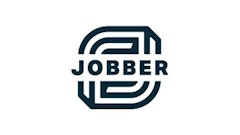
The 28th United Nations Climate Change Conference, known also as Conference of the Parties (COP28), wrapped in December 2023, and the agreements made there could have a number of implications for landscaping businesses.
COP28 concluded with a contentious agreement to shift away from fossil fuels rather than phase them out. The conference is host to a number of parties, including member states of the U.N. Framework Convention on Climate Change, business leaders, climate scientists, Indigenous Peoples, journalists and a slew of other experts and stakeholders.
The agreement to move away from fossil fuels was touted by nongovernment organizations (NGOs) and representatives from several countries as “insufficient." This is in line with the current administration’s climate strategy, including the Infrastructure Investment and Jobs Act (IIJA) passed in 2021, a majority of which focuses on green initiatives.
Therefore, U.S. businesses can expect to continue seeing a push for (and enforcement of) related regulations.
Cost of meeting climate goals
The agreement made at COP28 to reduce consumption and production of fossil fuels by 2050 sets the stage for many countries to push forward with stringent emissions policies. While a large portion of sustainability measures surround mobile assets, the banning of gas-powered equipment like leaf blowers in the U.S. has been growing, both in practice and conversation.
Asset electrification may remain the most viable option for landscaping businesses to meet climate goals, but the COP28 agreement does recognize the use of transitional fuels in maintaining energy security. Similar to the lack of infrastructure to support electric vehicles (EVs) at large scale, however, fuels like hydrogen will likely encounter similar problems in implementation, especially if the production method relies heavily on solar power. Solar farms are already experiencing costly issues, and many states are running into pushback at the local level, especially in rural communities, regarding building energy facilities.
Aside from vehicles and equipment, synthetic fertilizers are also a point of contention both in the use and manufacturing of them. Because organic fertilizers are often more expensive, this can be disruptive to planned budgets and cause landscaping businesses to have to charge customers more or cut costs elsewhere. With consumer credit card debt and delinquencies—not to mention inflation—continuing to rise, some businesses that need to adjust prices may be at risk of losing customers.
Budgetary flexibility
For landscaping businesses, goals outlined in the COP28 agreement will likely translate into a need for cutting costs and adapting to emissions regulations. Budgetary flexibility can be a significant advantage here, as it allows businesses to adapt to financial challenges quickly. Using historical financial data, businesses can identify top variable costs to get a better idea of if, where, and why overspend is happening, as well as estimate how much would be needed to cover deficiencies in certain parts of the budget.
When it comes to approved green assets, knowing the tax credits and rebates available for electrified vehicles and equipment can put businesses in a better position to strategically plan for procurement, replacement and associated costs while minimizing productivity disruptions.
Curb costs with fleet management solutions
Access to historical and real-time fleet data can be every bit as important to budgeting and cost control as financial data and provides insights around how much was spent versus budgeted for, helping landscaping fleets better understand where and how to improve their operation.
Using fleet solutions, like fleet management software (FMS), affords fleets easy availability of high-level data around the fleet as a whole, as well as a more granular view of individual assets. The software automatically collects, consolidates and aggregates data for each asset and will pull information from integrations with other fleet and business solutions for more robust, well-rounded insights. Data in FMS is displayed in up-to-date fleet reports that express key metrics from which businesses can follow an audit trail to source issues. Metrics are also displayed on a customizable dashboard so issues are easy to spot at a glance.
A bonus of FMS, especially when it comes to preparation around meeting emissions regulations, is cost comparison by year data, which can help fleets determine which assets are driving up costs and ready to be replaced. When making a longer-term plan for procuring EVs or other alternative fuel assets, FMS has a vehicle replacement analysis tool that calculates the optimal replacement window of assets in the fleet.
While the language around fossil fuel use in the COP28 agreement may be deemed as insufficient, there’s little denying that many countries (the U.S. included) will continue moving forward with climate initiatives. This can cut into the potential for profit in the landscaping industry, especially for smaller businesses, but by taking advantage of comprehensive fleet and financial data, you can improve budgetary flexibility and better prepare for emissions regulations.


























